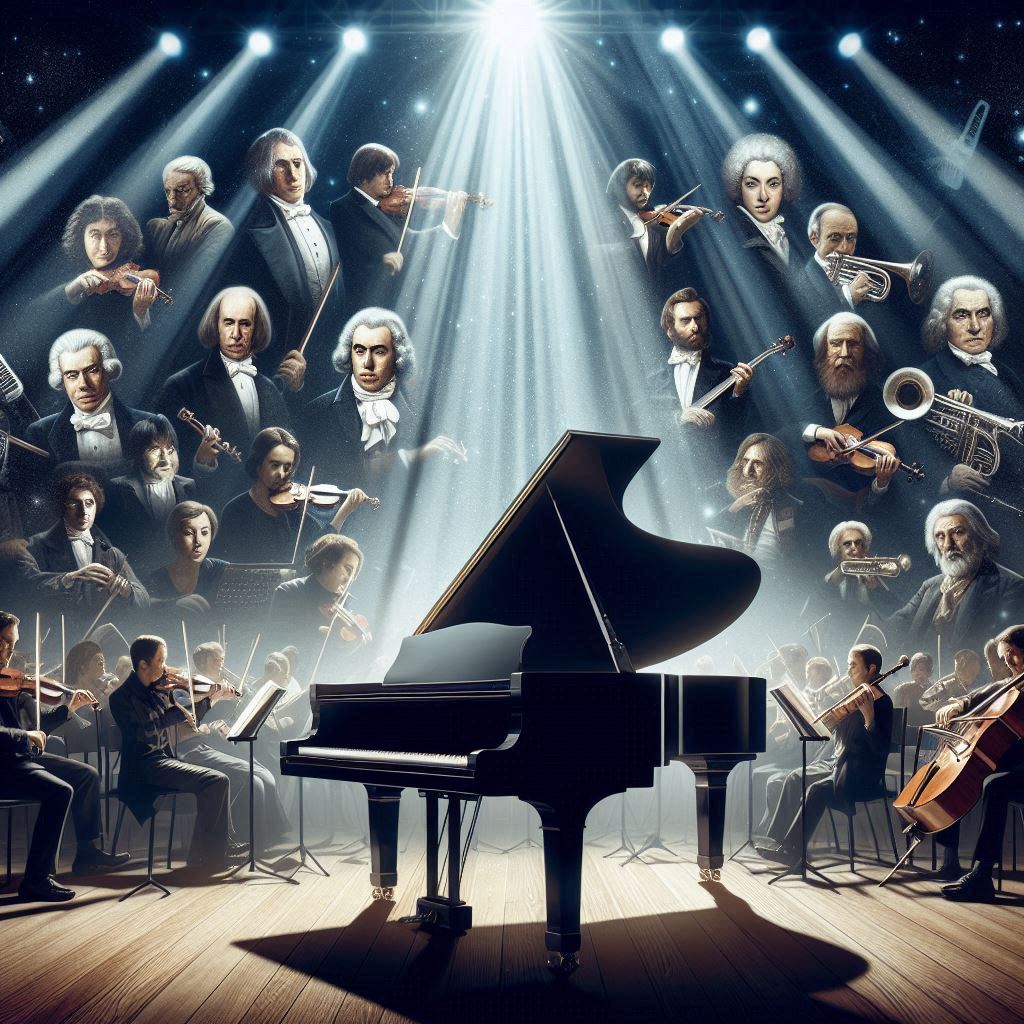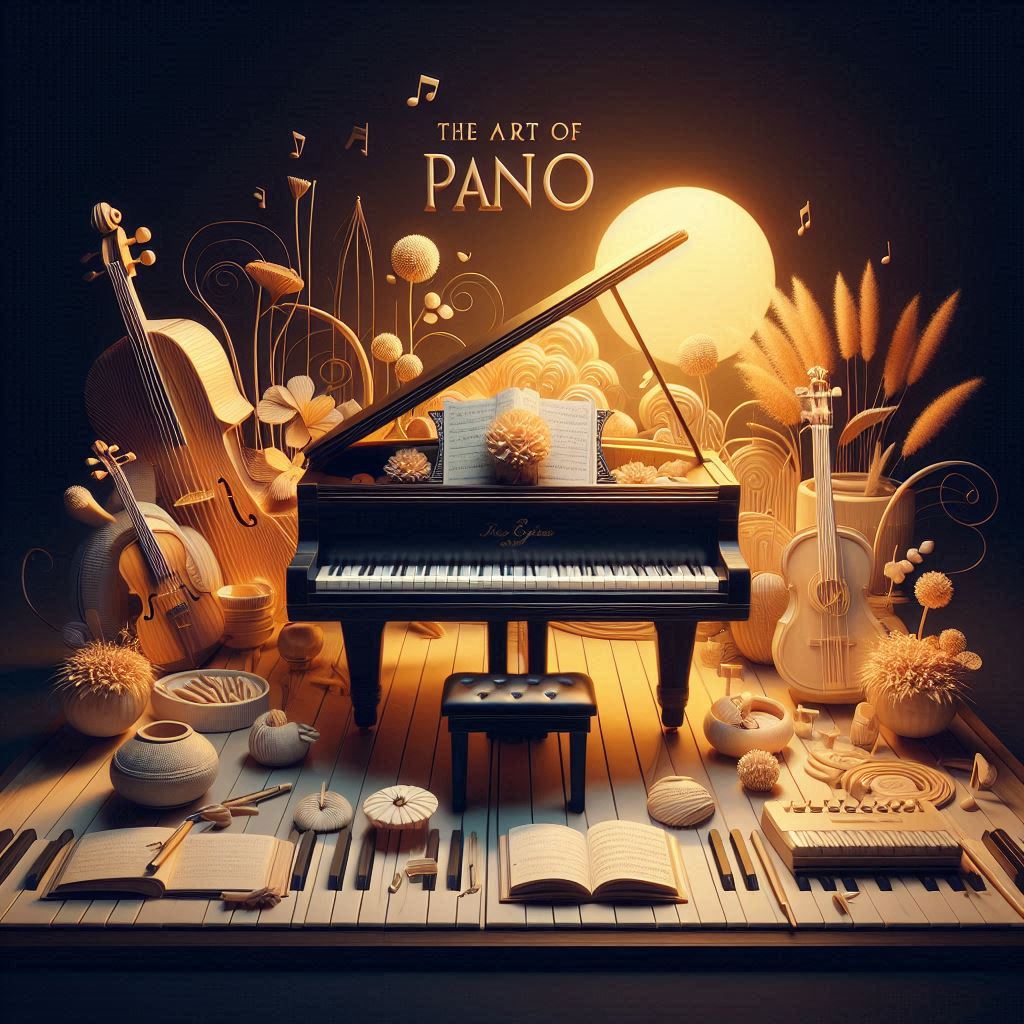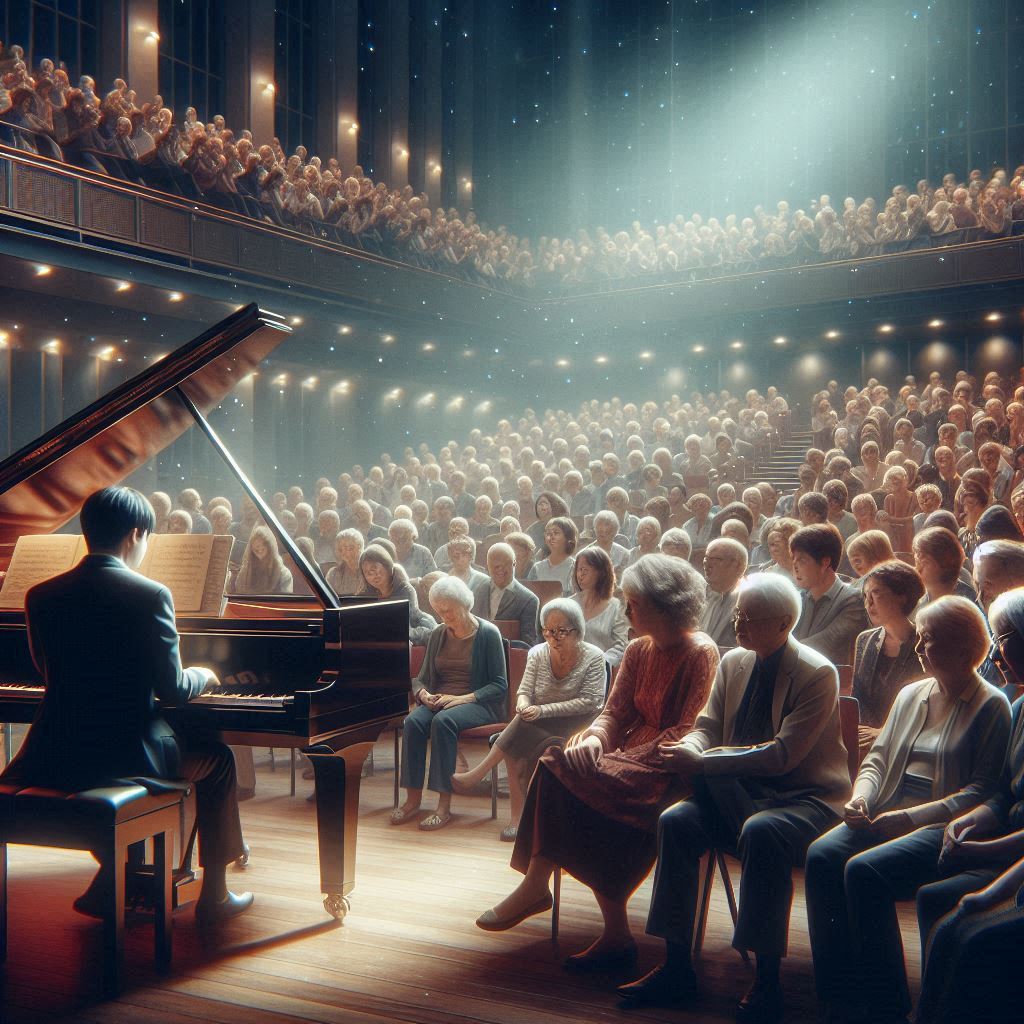Introduction
Piano concertos are among the most celebrated works in classical music, showcasing the piano’s versatility and the composer’s creativity. These masterpieces combine technical prowess, emotional depth, and orchestral grandeur, providing a rich tapestry of musical expression. This blog explores some of the most famous piano concertos and their composers, delving into the history, significance, and unique features of these iconic pieces.
Thank you for reading this post, don't forget to subscribe!1. Wolfgang Amadeus Mozart: Piano Concerto No. 21 in C Major, K. 467
Background and Significance
Mozart’s Piano Concerto No. 21, often referred to as the “Elvira Madigan” concerto after its use in the 1967 film, is one of his most beloved works. Composed in 1785, it exemplifies the elegance and clarity of the Classical period.
Key Features:
- Lyrical Melodies: The second movement, Andante, is particularly famous for its serene and lyrical melody.
- Balanced Structure: The concerto features a balanced interplay between the piano and orchestra, showcasing Mozart’s mastery of form and orchestration.
Notable Recordings
Example:
- Alfred Brendel: Known for his insightful interpretations, Brendel’s recording of this concerto is a favorite among classical music enthusiasts.
2. Ludwig van Beethoven: Piano Concerto No. 5 in E-flat Major, Op. 73 (“Emperor”)
Background and Significance
Beethoven’s Piano Concerto No. 5, nicknamed the “Emperor,” is a monumental work that pushed the boundaries of the concerto form. Composed between 1809 and 1811, it is known for its heroic and expansive character.
Key Features:
- Grand Scale: The concerto is notable for its grand scale and virtuosic demands on the soloist.
- Innovative Structure: Beethoven integrates the soloist and orchestra more closely than in previous concertos, creating a seamless musical dialogue.
Notable Recordings
Example:
- Artur Rubinstein: Rubinstein’s recording of the “Emperor” concerto is renowned for its power and lyrical beauty.
3. Frédéric Chopin: Piano Concerto No. 1 in E minor, Op. 11
Background and Significance
Chopin’s Piano Concerto No. 1, composed in 1830, is a quintessential Romantic work. It highlights Chopin’s lyrical style and his deep understanding of the piano’s expressive capabilities.
Key Features:
- Poetic Melodies: The concerto is rich in poetic melodies and delicate nuances, particularly in the second movement, Romanze.
- Virtuosic Piano Writing: Chopin’s writing for the piano is technically demanding yet deeply expressive.
Notable Recordings
Example:
- Martha Argerich: Argerich’s interpretation of Chopin’s Piano Concerto No. 1 is celebrated for its fiery intensity and emotional depth.
4. Johannes Brahms: Piano Concerto No. 2 in B-flat Major, Op. 83
Background and Significance
Brahms’ Piano Concerto No. 2, completed in 1881, is a towering work in the Romantic repertoire. It is known for its symphonic scale and intricate interplay between the piano and orchestra.
Key Features:
- Four Movements: Unlike the typical three-movement structure, this concerto has four movements, adding to its complexity and depth.
- Rich Orchestration: Brahms’ orchestration is lush and intricate, creating a rich musical tapestry.
Notable Recordings
Example:
- Claudio Arrau: Arrau’s recording of Brahms’ Piano Concerto No. 2 is praised for its profound interpretation and technical mastery.
5. Sergei Rachmaninoff: Piano Concerto No. 2 in C minor, Op. 18
Background and Significance
Rachmaninoff’s Piano Concerto No. 2, composed in 1900-1901, is one of the most popular concertos in the repertoire. It marked Rachmaninoff’s return to composition after a period of depression and creative block.
Key Features:
- Romantic Lyricism: The concerto is celebrated for its sweeping Romantic melodies and lush harmonies.
- Technical Brilliance: The piano writing is both virtuosic and deeply expressive, showcasing Rachmaninoff’s prowess as a pianist.
Notable Recordings
Example:
- Vladimir Ashkenazy: Ashkenazy’s recording of Rachmaninoff’s Piano Concerto No. 2 is renowned for its emotional depth and technical precision.
6. Pyotr Ilyich Tchaikovsky: Piano Concerto No. 1 in B-flat minor, Op. 23
Background and Significance
Tchaikovsky’s Piano Concerto No. 1, composed in 1874-1875, is a staple of the Romantic piano concerto repertoire. Its powerful opening chords are instantly recognizable and set the tone for the dramatic and lyrical work that follows.
Key Features:
- Dramatic Opening: The concerto opens with a bold, dramatic theme played by the orchestra and piano.
- Expressive Depth: The concerto balances virtuosic passages with deeply expressive melodies, particularly in the second movement, Andantino semplice.
Notable Recordings
Example:
- Van Cliburn: Cliburn’s legendary performance of Tchaikovsky’s Piano Concerto No. 1 at the 1958 Tchaikovsky Competition in Moscow remains a benchmark for this work.
7. Sergei Prokofiev: Piano Concerto No. 3 in C Major, Op. 26
Background and Significance
Prokofiev’s Piano Concerto No. 3, composed between 1917 and 1921, is one of his most popular works. It is known for its brilliant orchestration, rhythmic vitality, and melodic inventiveness.
Key Features:
- Rhythmic Drive: The concerto features dynamic rhythms and energetic themes.
- Melodic Innovation: Prokofiev’s inventive melodies and harmonies create a unique and captivating sound world.
Notable Recordings
Example:
- Martha Argerich: Argerich’s interpretation of Prokofiev’s Piano Concerto No. 3 is celebrated for its intensity, precision, and vitality.
FAQs
What makes a piano concerto different from other types of concertos?
A piano concerto is a composition for piano and orchestra, typically structured in three movements. It highlights the piano as the solo instrument, showcasing its technical and expressive capabilities in dialogue with the orchestra.
Why are Mozart’s piano concertos so significant in classical music?
Mozart’s piano concertos are significant for their elegant melodies, balanced structure, and innovative interplay between the piano and orchestra. They set a high standard for the Classical concerto form.
How did Beethoven’s “Emperor” Concerto influence piano concertos that followed?
Beethoven’s “Emperor” Concerto expanded the scale and scope of the piano concerto, integrating the soloist and orchestra more closely and setting a new benchmark for virtuosity and expressiveness.
What is unique about Chopin’s piano concertos?
Chopin’s piano concertos are unique for their lyrical beauty and intricate piano writing. They focus on the expressive capabilities of the piano, often overshadowing the orchestral parts.
Why is Rachmaninoff’s Piano Concerto No. 2 so popular?
Rachmaninoff’s Piano Concerto No. 2 is popular for its Romantic melodies, rich harmonies, and technical brilliance. It combines deep emotional expression with virtuosic demands, making it a favorite among pianists and audiences.
How did Prokofiev’s Piano Concerto No. 3 contribute to 20th-century music?
Prokofiev’s Piano Concerto No. 3 contributed to 20th-century music with its innovative use of rhythm, melody, and harmony. It reflects Prokofiev’s distinctive style, blending classical forms with modernist elements.
Conclusion
Famous piano concertos offer a rich exploration of musical expression, technical prowess, and historical development. From Mozart’s Classical elegance to Rachmaninoff’s Romantic lyricism and Prokofiev’s modernist innovations, these works continue to captivate audiences and inspire pianists around the world. By studying and appreciating these masterpieces, we gain a deeper understanding of the piano’s role in classical music and its enduring impact on the musical landscape. Happy listening!



